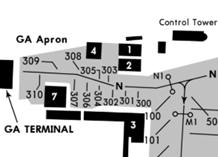Pilot Resources
GENERAL
Overview.
| FIR | LIMM |
| City | Turin |
| Airport/ATS Operational Hours | Available 24/7 |
Scenery. We highly recommend to use of one of the following sceneries, in order to avoid issues to the Air Traffic Controller due to missing parkings/taxiways and for you to enjoy at your best any flight to this aerodrome:
| FSX/P3D | XPlane | MSFS |
| LIMF by RF Scenery Building (payware) |
LIMF by MDAB007 (freeware) LIMF by 3DReal (payware) |
No Scenery currently available. |
Charts.
| Freeware | Payware |
| Italian eAIP (registration required) | Navigraph |
Preferential RWY. Torino has one runway, 18/36:
Preferential runway is RWY 36, provided that:
- if the runway is dry, the tail wind component is not greater than 7 kt
- if the runway is wet, the tail wind component is not greater than 5 kt
Therefore, RWY 18 shall be used when:
- the tail wind components is greater than above limits
- braking action on RWY 36 is reported as “poor”
Low Visibility Procedures (LVP).
LVP will be in force when:
- RVR is equal or less than 550 m and/or
- when cloud base height is below 200 ft according to the meteorological local report and/or
- the rapid deterioration of weather conditions recommends so
Pilots will be informed by ATIS and/or ATC communication when LVP are in force.
Operations in CAT II, CAT III A/B and LVTO are allowed only for RWY 36. Departures may also be allowed from RWY 18, when LVP are in force and RVR is equal or greater than 400m, for meteorological reasons or aircraft performance require so for safety purposes.
Aerodrome operating minima is RVR not less than 75m.
In LVP conditions reduced airport capacity can be expected due to restrictions applied to ground movements. Furthermore, all pilots shall report to ATC:
- reaching RHP/IHP, unless otherwise instructed by TWR;
- when ILS sensitive area has been vacated as identified by the end of the green/yellow colour coded TWY centerline lights;
- reaching the assigned parking stand.
For taxi procedures with LVP in progress, refer to applicable charts.
Taxi procedures
Taxiway J is closed.
Taxi/Landing light must be on at all times.
Following restrictions apply to taxiways:
- Taxilane N (on main apron) MAX wingspan 38m
- Taxilane M, MAX wingspan 36m
- Taxilane from L to M MAX wingspan 38m
Start-up at parking positions, exit from self-manoeuvring stands and taxiing shall be performed with minimum required thrust.
When landing operations on RWY 36 are in progress, the use of runway holding position on TWY F is forbidden and aircraft code E and F taxiing toward TWY G, shall hold not beyond intermediate holding position G1.
Self-manoeuvring operations are permitted only from stands 100 to 105, 601 to 604 for aircraft with maximum wingspan 24m.
From stand 100 to 117, 201 to 204, 307,400,701,702 and 800 pushback is required.
Pushback operations and start-up shall be approved by ATC and shall be performed facing south.
Access to runway via taxiway D permitted only for aircraft with ICAO code A and B.
Use of RWY holding positions on TWY B, C, D, E and F during taxiing operations on TWY Y and apron TWY L:
- During taxi operations on TWY Y and apron TWY L use of RWY holding positions identified by pattern B on TWY B, C, D and E and by pattern A on TWY F are not allowed
- During taxiing operations of A or B or C or D code ACFT on TWY Y and apron TWY L only A or B or C code ACFT are allowed to use only the RWY holding positions identified by pattern A, on TWY B, C, D and E
- During taxiing operations of E or F code ACFT on TWY Y and apron TWY L none of the RWY holding positions on TWY B, C, D, E and F can be used.
Access to RWY via TWY D is allowed only to ACFT with ICAO code A and B.
Flight Planning. RNAV SIDs must be used when the aircraft is RNAV capable. If unable, ATC must be warned when requesting clearance.
Departure Clearances (DCL). Please ask for departure clearance 10 minutes before EOBT.
Pushback and Start-up. Clearance for pushback and start-up must be obtained by ATC. When requesting pushback, the aircraft should be in an Aircraft Ready State which means:
- aircraft doors closed
- loading bridge retracted
- stand free from vehicles, equipment and people aircraft
- ready for push-back or taxi
Noise Abatement.
Noise abatement procedures shall ensure that safety has priority over noise abatement and be simple and safe to operate with no significant increase in crew workload during critical phases of flight.
Choice of Noise Abatement Departure Procedure 1 or 2 is at pilot discretion. Below you can find a brief description of both of them.
NADP 1
- After take-off, keep take-off thrust until reaching 800ft AGL, flaps/slats in take-off configuration and speed V2 + 10/20 kts
- At 800 ft AGL reduce thrust to climb power. Continue keeping flaps/slats in take-off configuration and speed V2 + 10/20kts with reduced thrust.
- At 3000ft AGL, maintaining positive rate of climb accelerate to normal climb speed. Retract flaps/slats as required.
NADP 2 (most common)
- After take-off, keep take-off thrust until reaching 800ft AGL, flaps/slats in take-off configuration and speed V2 + 10/20 kts
- Reaching 800ft AGL, while maintaining positive rate of climb, accelerate towards the flap retraction speed. Start reducing power to “climb” with the first retraction of flap/slats. In the end, maintain a speed equal to Flaps UP speed + 10/20 kts.
- Reaching 3000ft AGL, maintaining positive rate of climb, accelerate to normal climb speed.
Use of RWY 18 limited only to ATC reasons. Pilots may request use of RWY 18 for weather, technical or safety reasons. Delay should be expected. Pilots shall declare reasons when requesting RWY 18.
The use of reverse thrust at a power higher than idle is allowed only for proven safety reasons.
Night landings: 2200-0500 (2100-0400) landing aircraft shall use all the available length of RWY to reach apron or parking area except for aircraft having landing performances allowing a shorter run without use of reverse thrust
Flight Planning. RNAV STARs must be used where the aircraft is RNAV capable. If unable, ATC must be warned at first contact.
Speed Restrictions. Unless otherwise authorized by ATC, pilots must comply with following speed control:
- 250 KT IAS at FL100 or below
- 210 KT IAS starting the turn to intercept the ILS/LOC or the appropriate VOR radial (in case of VOR or VOR/DME approach) or at 12DME from RWY threshold
- 180 KT IAS completing the intercepting turn or at a distance of 9 NM from RWY threshold
- 160 KT IAS at a distance of 5NM from RWY threshold
Communication failure. In the event of radio failure, the designated radio aid to descend for landing is TOP VOR.
General. As above reported, in Caselle also VFR operations are approved. In real life, VFR traffic belonging to local Flying club operates at “Torino-Aeritalia” airfield, located southwest of Caselle. Generally, VFR flights are highly operated at this airfield comparing to Caselle. However, this does not mean that Caselle cannot be used for training purposes/general aviation flights.
Reporting points.
VFR flights to/from Torino Caselle airport shall be conducted with reference to published visual reporting points.
The following points may be used
- CTR (MFNW2)
- LANZO TORINESE (MFNW1)
- FIANO (MFW1)
- RONDISSONE (MFE3)
- CANDIA CANAVESE (MFNE1)
- CARIGNANO (MFS1)
Entry/Exit points.
Before joining the traffic pattern or overflying the aerodrome, VFR traffic shall fly to either FIANO (MFW1) or VOLPIANO (MFE1) and hold waiting for ATC clearance.
FIANO and VOLPIANO shall be used as first reporting points to leave the pattern as well.
Traffic circuit.
Both traffic patterns (left and right) are available for both runway 18 and 36. These will be assigned by ATC. If no ATC is available and weather permits, it’s strongly recommended to use runway 36 with left/right traffic pattern at discretion.
VMC. Those of a class D airspace apply. Special VFR applicable.
Night VFR. Currently not allowed for aeroplanes.
General Aviation Apron.

Taxilane N is used to access (General Aviation Apron). MAX wingspan 20m.
On General Aviation Apron only one movement of aircraft at a time is allowed to/from the apron.
Uncontrolled Operations. The following frequencies should be utilized only when POSCON ATC is offline.
| Station | VHF Frequency |
| Torino Terminal Information (ATIS) | 120.475 (currently not operational) |
| CTAF | *122.950 |
| Emergency Frequency (Guard) | 121.500 |
* Torino has no published CTAF, so the standard frequency (122.95) must be used.
Controlled Operations.
| Station | VHF Frequency |
| Torino Radar | 129.275 |
| Torino Tower | 118.500 |
| Torino Ground | 121.700 |
| Emergecy Frequency (Guard) | 121.500 |
